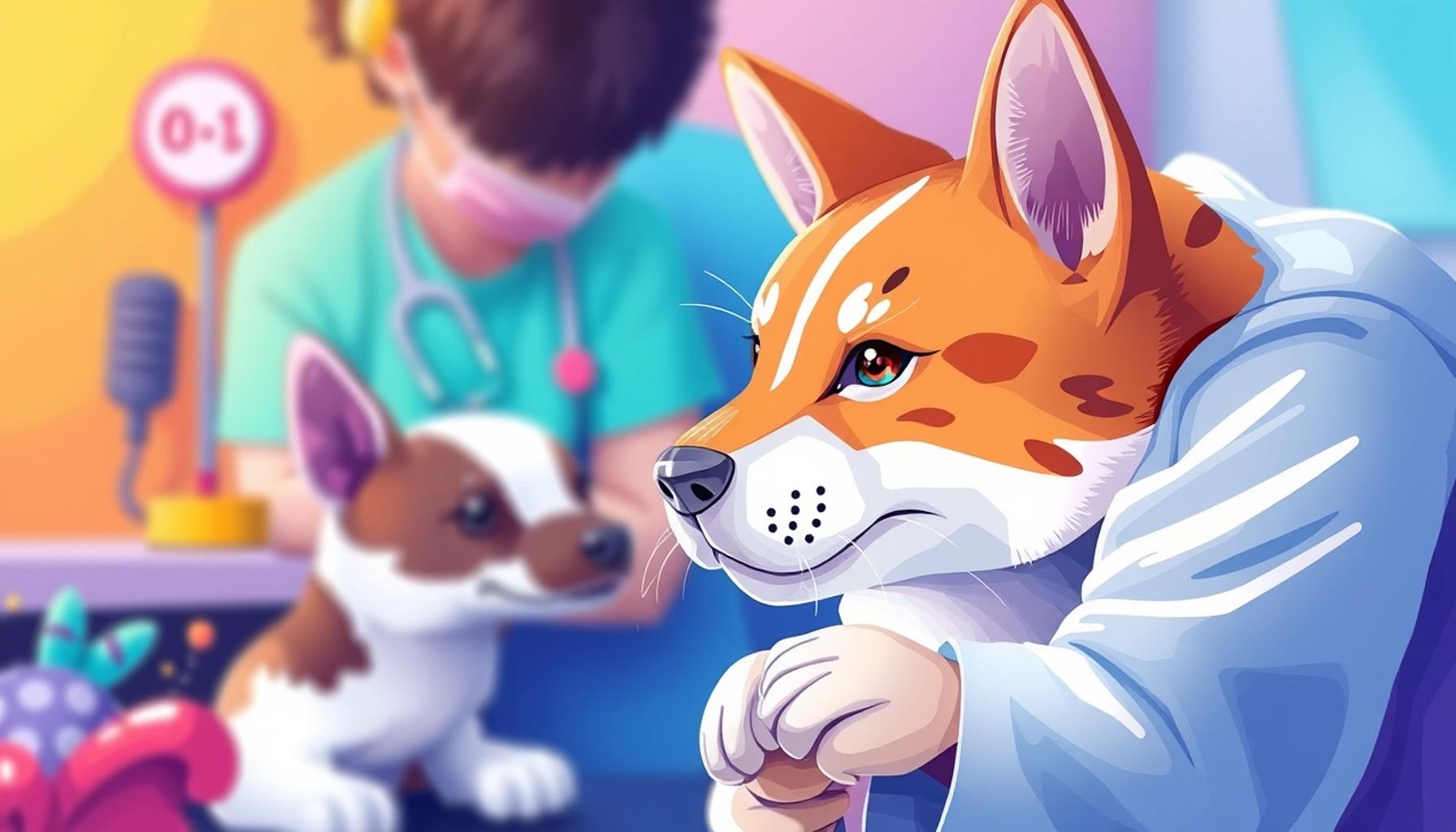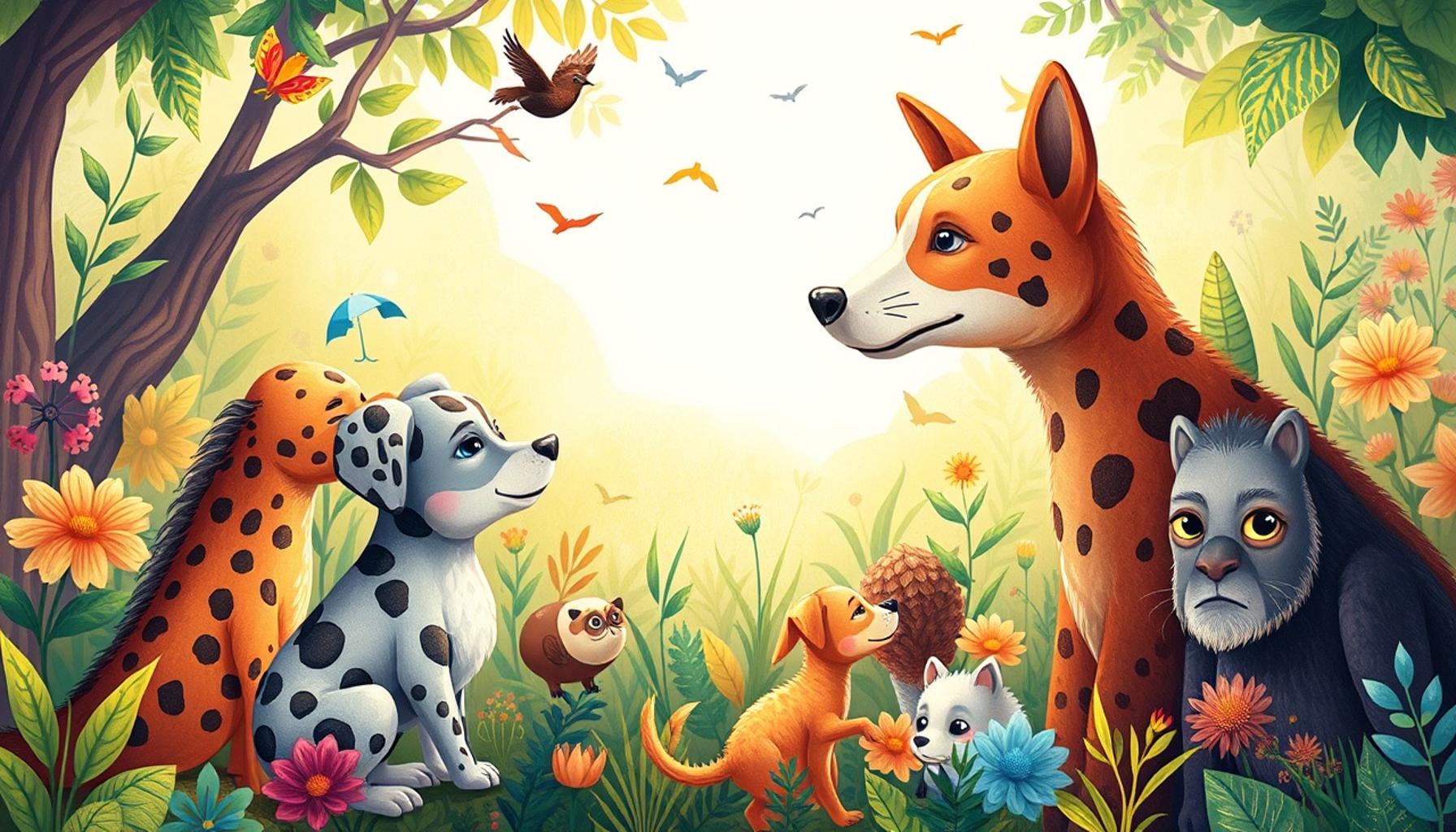Emerging Trends in Animal Adoption Services in the United States

A Transforming Adoption Landscape
The emergence of new trends in the animal adoption services sector represents a significant shift in how shelters and rescue organizations operate throughout the United States. Traditional methods of pet adoption often involved long wait times and less engaging processes, but now, this landscape is being infused with innovation to create a more seamless and fulfilling experience for all involved.
One of the most significant changes is the integration of technology into the adoption process. Various online platforms and mobile applications, such as Petfinder and Adopt-a-Pet, allow potential adopters to browse profiles of animals in need of homes from anywhere. These platforms often include high-quality photos, detailed descriptions, and even videos, providing a comprehensive view of the animals. Moreover, features like virtual meet-and-greets via video calls and scheduling in-person visits through mobile apps streamline the interactions, making it easier for both shelters and adopters to connect.
Community Connection and Awareness
Beyond technology, community engagement plays a pivotal role in modern adoption strategies. Local initiatives focusing on outreach and education are becoming more prevalent. For instance, awareness campaigns and partnerships with local businesses can significantly enhance the visibility of available pets. Events such as “Clear the Shelters” and “Adopt a Dog Month” not only raise awareness about the number of animals needing homes but also foster a sense of community responsibility towards animal welfare. These initiatives invite residents to get involved, whether through volunteering at shelters or fostering pets temporarily.
Diverse and Unique Adoption Events
In addition to traditional adoption days, diverse adoption events are gaining popularity. Creative events like “Yappy Hours” at dog-friendly venues and pet fairs provide a relaxed environment where potential adopters can meet a variety of animals. These gatherings encourage socialization among pets and their would-be owners, making it easier for families to find a pet that fits their lifestyle. Organizations are discovering that higher adoption rates often correlate with fun and engaging community-driven events.
Crucially, organizations are increasingly prioritizing the matching process to ensure compatibility between pets and their new families. Instead of relying solely on superficial traits like breed or color, shelters are now assessing lifestyle factors, including family dynamics, activity levels, and even specific pet behaviors. This tailored approach not only boosts adoption rates but also helps reduce the number of animals returned to shelters, fostering long-term and harmonious connections between pets and adopters.

Statistics underscore the significance of this evolving landscape, with over 6 million companion animals entering U.S. shelters each year. As more individuals recognize the importance of adopting rather than buying pets, the combined efforts of technology, community involvement, and innovative event strategies are vital to creating a sustainable solution for this pressing issue.
Ultimately, the future of animal adoption services points towards not just finding homes for pets but building lasting relationships that benefit both animals and their humans. By embracing these trends and continuing to evolve with them, shelters are positioned to make a profound impact on communities nationwide, ensuring every animal finds a loving and permanent home.
DISCOVER MORE: Click here to learn about the steps to adopting a pet
Innovative Practices Shaping the Future of Animal Adoption
The animal adoption service landscape in the United States is rapidly evolving, not only in terms of technology but also through innovative practices that focus on enhancing the experience for both pets and adopters. As adoption rates are directly influenced by how organizations present their animals and foster community engagement, many are reshaping their approaches to connect with potential adopters more effectively.
Virtual Tours and Adoption Platforms
Within the realm of technology, virtual tours of shelters and online adoption platforms are transforming how people engage with animals looking for a home. Shelters have begun incorporating 360-degree virtual tours on their websites, allowing potential adopters to explore animal living conditions and interact with the environment where the pets are housed. This transparency builds trust and aids in knitting a connection before even stepping foot in a shelter.
Additionally, online platforms have introduced features that emphasize the emotional appeal of pet adoption. Stories and testimonials from current owners can now be featured alongside animal profiles. By highlighting success stories of adopted pets, shelters can evoke empathy and inspire others to join the movement. These profiles showcase the unique personalities of animals, offering insights into their behaviors and needs, allowing adopters to better match with their future pet.
A Shift Toward Inclusivity
A significant trend in the animal adoption services landscape is the commitment to diversity and inclusivity. Organizations are aware that animals of all breeds, sizes, and backgrounds have a place in loving homes. Consequently, shelters are working to debunk the myths surrounding certain breeds often viewed negatively by the public. Campaigns like “Adopt Different” focus on encouraging the adoption of less popular breeds, which can face barriers even with the same temperament as more sought-after options.
Moreover, awareness of the adoption process itself is being democratized through various outreach efforts, ensuring that every community, regardless of socioeconomic status, has access to information about adopting pets. This includes providing resources in multiple languages and hosting informative workshops about pet care and the benefits of adoption, which can bridge gaps that exist in underserved areas.
Collaboration with Local Businesses
Partnerships with local businesses are also revolutionizing how shelter animals are promoted and adopted. Many organizations have initiated collaborative efforts with pet supply stores, coffee shops, and even fitness studios to host adoption events, thus diversifying the typical adoption outreach venues. Here are some examples of how this collaboration manifests:
- Pop-up Events: Temporary adoption events at pet shops enable shoppers to meet animals in a casual setting while promoting a buy-local philosophy.
- Themed Adoption Days: Collaborations with businesses allow for themed days where people can come and interact with pets that match the theme, like “Paws and Claws Day” at a local brewery.
- Referral Programs: Some businesses are creating incentive programs where purchases can lead to donations to shelters or discounts for adopters, enhancing community involvement.
These innovative approaches are not only enhancing visibility for shelter animals but are also fostering a sense of belonging and responsibility within communities. By embracing trends that emphasize inclusivity, collaboration, and appealing narratives, the animal adoption services sector in the United States is making strides toward a brighter future for millions of animals in need of homes.
| Category | Details |
|---|---|
| Technology Integration | Adoption services are increasingly utilizing advanced technologies, including AI-driven platforms that match potential adopters with animals based on personality and lifestyle compatibility. |
| Community Engagement | Emerging initiatives focus on local community involvement, creating networks for shared resources, volunteer opportunities, and educational programs promoting responsible pet ownership. |
The use of cutting-edge technology in animal adoption not only streamlines the process but also enhances the likelihood of successful matches, thereby reducing the rate of returns. Communities across the U.S. are adopting collaborative frameworks aimed at boosting adoption rates through enriched engagement. This evolving landscape is geared towards fostering responsible, long-term adoptions and improving the well-being of animals in shelters. As these trends gain momentum, they open up new avenues for potential adopters and shelters alike, leading to an increased focus on the social responsibility of pet ownership.
DISCOVER MORE: Click here to learn about balanced nutrition for your pet’s health
The Role of Social Media in Promoting Pet Adoption
In today’s digital age, social media has become an essential tool for animal adoption services, allowing organizations to reach wider audiences and engage potential adopters creatively. Platforms like Instagram, Facebook, and TikTok are heavily utilized to showcase animals in need of homes through captivating posts and videos. Creative and heartfelt content, such as “day in the life” videos of shelter pets or playful challenges featuring adoptable animals, effectively capture the attention of viewers and encourage sharing.
Moreover, with the rise of social media influencers, many shelters have harnessed the popularity of these individuals to promote adoption events. Collaborations with influencers who share their love for animals can significantly amplify the reach of targeted messages. For instance, a local shelter might feature a well-known pet influencer to highlight lesser-known animals during “Adoption Awareness Month.” This not only attracts followers to the platform but also creates a buzzing community invested in finding homes for animals.
Community Engagement through Mobile Apps
As technology advances, mobile applications dedicated to pet adoption are gaining traction. These apps offer a user-friendly experience for potential adopters, allowing them to view adoptable pets, read about each animal’s story, and sometimes even chat with volunteers or potential fosters directly. For example, apps like Pawboost and Petfinder enable users to filter by breed, size, and location, making the search for a companion exceedingly convenient.
Furthermore, some shelters are developing proprietary apps that facilitate not just adoption but also ongoing support for new pet owners. These mobile applications may provide resources such as training tips, vet locations, and reminders for vaccinations, ensuring adopters feel supported after bringing their new family member home. This holistic approach enhances the perception of pet ownership as an enriching experience rather than a burden.
Focus on Behavioral and Medical Assessment
To improve adoption success rates, many shelters are increasingly instituting behavioral and medical assessments for their animals before they are made available for adoption. This trend aims to match pets with the right families based on compatibility and helps to prepare adopters for the responsibilities they are undertaking. By working with veterinarians and trained behaviorists, shelters can provide a comprehensive profile of each animal detailing their needs, temperament, and potential challenges.
This proactive measure not only enhances the adoption experience but also reduces the likelihood of returns. When potential adopters are matched with pets that suit their lifestyles, the chances of a harmonious transition into a new home increase significantly. A study conducted by the ASPCA found that dogs returned to shelters due to compatibility issues often stemmed from a lack of information during the adoption process.
Encouraging Fostering as a Stepping Stone to Adoption
Another emerging trend that has shown great promise is fostering programs, which serve as a temporary solution for animals in need while they’re waiting for permanent homes. Shelters are actively encouraging fostering as a viable alternative to traditional adoption. Many organizations promote fostering as a way to assess whether an animal is a good fit for the prospective adopter’s lifestyle before a long-term commitment is made.
Fostering not only helps alleviate overcrowding in shelters, but it also provides animals with a more nurturing environment, which can enhance their socialization skills and temperament. Adoption advocates argue that these interim homes create a more relatable and genuine impression of an animal’s behavior, increasing the likelihood of successful matches. Some shelters even incentivize fostering programs by offering supplies and support, thereby reducing barriers for potential foster families.
As the trends in animal adoption services continue to evolve, the collective emphasis on creativity, community engagement, and animal welfare showcases a promising future in securing loving homes for countless pets across the United States. Each of these initiatives highlights a shared goal: to promote successful, enriching relationships between humans and animals, ultimately leading to a stronger, more compassionate society.
DIVE DEEPER: Click here to discover the emotional and social benefits of pet adoption
Conclusion: The Future of Animal Adoption Services
As we look towards the future, the emerging trends in animal adoption services in the United States indicate a transformative shift that is better aligning the needs of animals with those of prospective pet owners. The integration of technology, particularly through social media platforms and dedicated mobile apps, provides innovative avenues for shelters and organizations to promote adoptions. By effectively utilizing these channels, shelters can not only reach wider audiences but also foster a sense of community around pet adoption.
Additionally, the emphasis on behavioral and medical assessments represents a crucial step in ensuring that pets are matched with families best suited to their individual needs. This trend minimizes the risk of returns and enhances the overall adoption experience, allowing for more stable and happy homes. Coupled with the growing acceptance of fostering programs, which serve as a supportive transitional step for both animals and potential adopters, the landscape for pet adoption is becoming increasingly nurturing and adaptive.
The remarkable combination of community involvement, technological advancements, and a focus on animal welfare creates a brighter future for countless pets in need across the nation. As more individuals become engaged in the adoption process and recognize the importance of animal rescue, the collective efforts towards fostering compassionate relationships between humans and animals will undoubtedly pave the way for a more empathetic society.
In summary, the trends we observe today are not just fleeting phenomena; they are integral to reshaping how we approach animal adoption, ensuring that every pet finds a loving home while significantly bolstering the human-animal bond. This paradigm shift underscores the responsibility society holds toward its furry companions and is a call to action for everyone to participate in the evolving mission of rescue and adoption.


